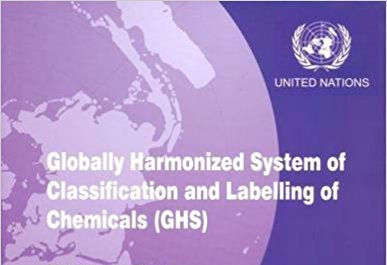Global Harmonization
OSHA's Hazard Communication Standard (HCS) is now aligned with the United Nations Globally Harmonized System of Classification and Labeling of Chemicals (GHS).
The GHS provides consistent criteria for classifying and communicating chemical hazards based on the types of hazards they pose. It ensures that information on chemical hazards and toxicity is available to improve the protection of health and the environment during chemical handling, transport, and use.
It provides harmonized communication elements on labels and safety data sheets (SDS) within three major hazard groups: Physical, Health, and Environmental. Below is a brief list of each hazard group.
Physical Hazards
These are hazards that arise from the physical properties of a chemical substance. They include but are not limited to:
- Explosives: Substances and mixtures that cause sudden, almost instantaneous release of gas, heat, and pressure.
- Flammable Liquids, Solids, Aerosols, and Gases: Substances and mixtures that can ignite under certain conditions.
- Oxidizing Liquids and Solids: Substances that may cause or enhance the combustion of other materials.
- Corrosives to Metals: Substances that can damage or destroy metals.
- Gases Under Pressure: Gases stored under high pressure, which may explode if heated.
Health Hazards
These hazards arise from the potential of chemicals to cause adverse effects on human health. This category includes:
- Acute Toxicity: The adverse effects resulting from a single exposure to a substance.
- Skin Corrosion/Irritation: Chemicals that can cause skin damage or reversible skin irritation.
- Respiratory or Skin Sensitization: Substances that may cause allergic respiratory or skin reactions.
- Carcinogenicity: Substances that can cause cancer.
- Reproductive Toxicity: Substances that can adversely affect sexual function and fertility in adult males and females, as well as developmental toxicity in offspring.
- Target Organ Systemic Toxicity: Substances that have specific toxic effects on certain organs.
Environmental Hazards
These are hazards that chemicals may pose to the aquatic environment and other aspects of the environment. They include:
- Hazardous to the Aquatic Environment: Substances that may be harmful to aquatic life with long-lasting effects.
- Hazards to the Ozone Layer: Substances that may harm the ozone layer.
Knowledge Check Choose the best answer for the question.
1-2. What criteria is used by the GHS to address the classification of chemicals?
You forgot to answer the question!

